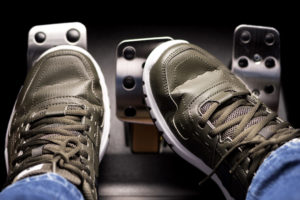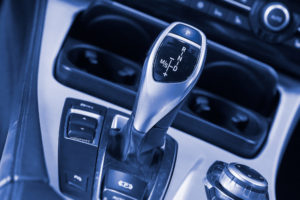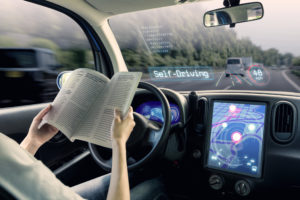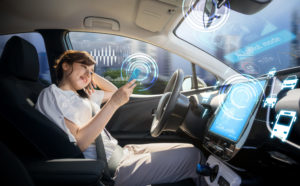Ah yes, the decades old debate: automatic or manual? Nowadays, with electric cars trying to take over the auto industry, it’s more than just automatic versus manual (stick shift) cars. There is another type of car on the scene, the self-driving one. Or at least, it’s starting to make its appearance. What does that mean for the industry?
With electric vehicles increasingly taking over the roads, some think that manual transmissions are going away for good. But, that probably still isn’t for years to come. High-end manufacturers of cars bought for the driving experience (i.e. luxury cars and sports cars) won’t give up the true-blue driver’s favorite, the manual shift. At least not without a fight. Driving a manual transmission car is simply much more interactive than an automatic. So, for car aficionados there is no comparison in the automatic versus manual debate.
However, automatic vehicles are the most popular cars these days. How many people do you know that can drive a stick shift? Most people wouldn’t get very far trying to drive a manual car without seriously damaging the transmission. That’s because most of us never learn how to shift gears in a manual car or even care to try driving one. After all, today’s world is all about ease and convenience. That’s why automatic transmission cars have been dominating the car industry for awhile. And they will continue to dominate the industry even more in the future.
 Since electric vehicles will most likely never be available with a manual transmission (although there are talks of some manufacturers trying to crack the code on how to do just that), manual cars will most likely be developed less and less. Also, self-driving cars or semi-autonomous vehicles are already available on the market with automatic transmission. Self-driving vehicles utilize cameras and sensors to change lanes, slow down and speed up. In a way, you could say that semi-autonomous vehicles are ultra-automatic cars because the vehicle decides on speeds (and therefore transmission shifts) if you allow it to do so.
Since electric vehicles will most likely never be available with a manual transmission (although there are talks of some manufacturers trying to crack the code on how to do just that), manual cars will most likely be developed less and less. Also, self-driving cars or semi-autonomous vehicles are already available on the market with automatic transmission. Self-driving vehicles utilize cameras and sensors to change lanes, slow down and speed up. In a way, you could say that semi-autonomous vehicles are ultra-automatic cars because the vehicle decides on speeds (and therefore transmission shifts) if you allow it to do so.
Automatic versus Manual versus Self-Driving
So now, the debate expands to automatic versus manual versus self-driving cars. And here are the pros and cons of all three types:
Automatic Car Pros:
- Automatic cars are easier to drive. This is because you don’t have to shift gears because the car does it for you.
- The brakes and the accelerator are the only two pedals you have to work in an automatic vehicle, unlike a manual car.
- You can keep both hands on the wheel, which makes for safer driving. Young drivers often need to drive with both hands on the wheel at all times while they gain experience on the road.
Automatic Car Cons:

- Automatic vehicles cost more. An automatic transmission is a more complicated piece of equipment than a manual transmission. Therefore, it costs more to fix.
- Automatic cars require more maintenance because of their complex systems.
- Automatic vehicles are less fuel-efficient than manual cars. This is because the torque converter utilizes fuel as it does the job of switching gears.
Manual Car Pros:
- Manual transmission cars are cheaper to buy upfront.
- Stick shift cars are also less expensive to maintain. They’re designed in a much simpler way, so they cost less to fix.
- Manual cars are more fuel efficient because they do not use extra power to shift gears with a torque converter.
- Manual cars are stolen less often than automatic cars. This is probably because they are less popular to drive. Those looking to sell parts from a stolen car also know that some essential parts are incompatible for automatics.
Manual Car Cons:

- In a manual transmission car, you may have to replace the clutch at some point. This could be costly, even though your transmission will cost much less in upkeep compared to an automatic car.
- You have three pedals to manage and you need to learn when to use the third pedal. Learning how to drive a stick shift car won’t come automatically, so to speak.
- You can’t have both hands on the wheel at all times because you need to use your right hand to shift gears. This could make driving less safe, especially for inexperienced drivers.
- Driving a manual car is troublesome in traffic jams because the driver has to constantly work the clutch.
Self-Driving Car Pros:
- You can be less focused on the road for almost a minute in some luxury self-driving cars. This is due to the sensors and cameras that tell the transmission and acceleration/brake systems when to slow down or speed up based on the traffic around you.
- Fewer accidents are expected in autonomous vehicles. They are meant mitigate human error by taking over when the driver fails to respond or see properly.
Self-Driving Car Cons:

- Self-driving cars are more expensive than both other types because the high-tech equipment costs a lot of money.
- Car Insurance will therefore cost more too. However, it’s predicted that prices will eventually level off.
- For the price you pay for self-driving features, there won’t be much difference in terms of wear-and-tear on the transmission. These cars are automatic and will have similar maintenance needs.
Car Insurance
No matter the trend on the road, you still need Auto Insurance to drive any car. Until cars become fully self-driving, paying Car Insurance is a fact of life for all car owners. While manufacturers may begin consolidating sales with insurance when vehicles are more responsible for accidents than their owners, that day has not yet come. For any type of car you choose to drive, contact an AIS Insurance Specialist at (855) 919-4247. You’ll get the best rates and the best coverage available with AIS.
The information in this article was obtained from various sources. This content is offered for educational purposes only and does not represent contractual agreements. It should not replace manuals or instructions provided by the manufacturer or the advice of a qualified professional. The definitions, terms and coverage in a given policy may be different than those suggested here and the language contained therein will govern such policy.

